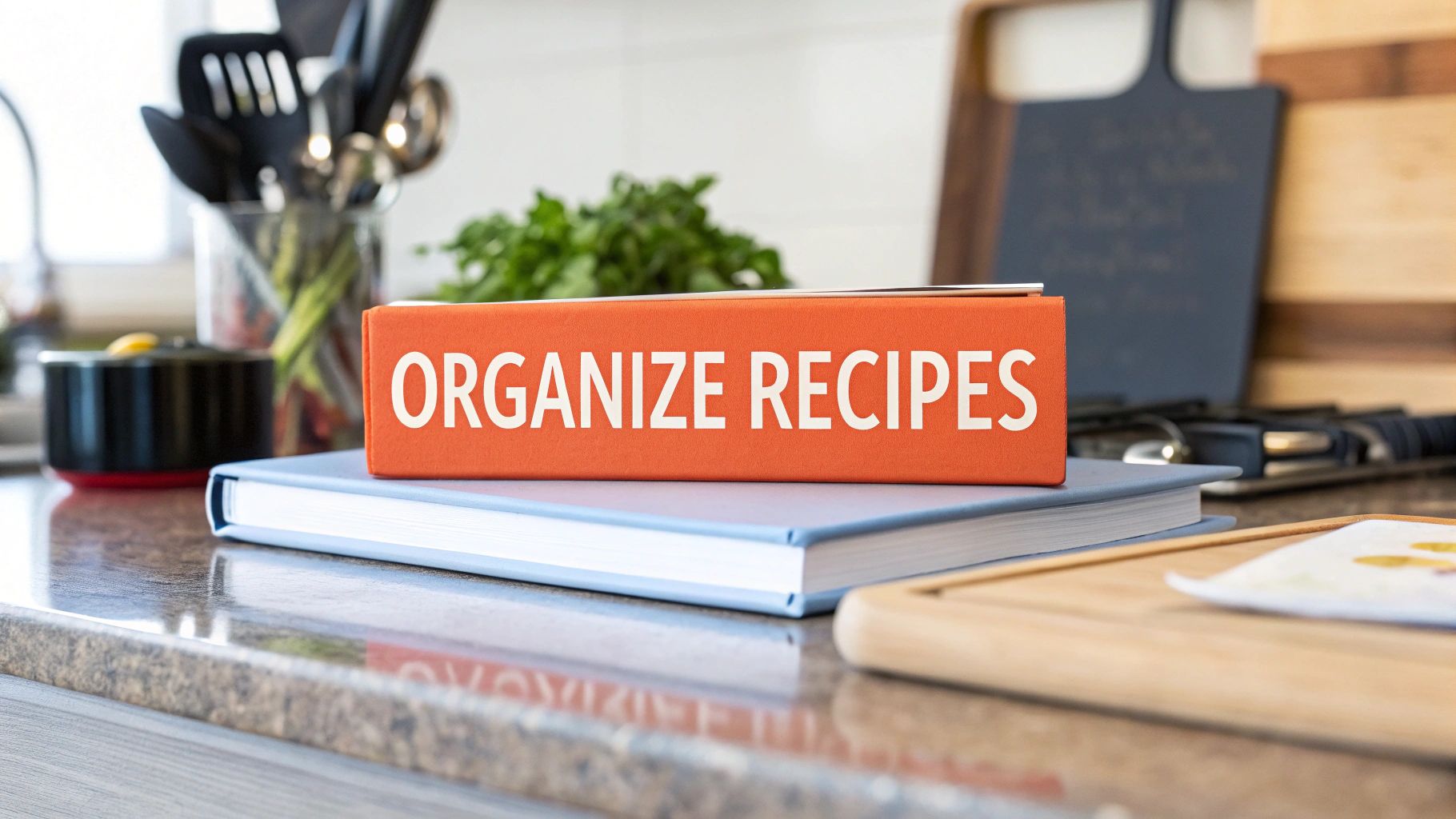Why Most Home Cooks Struggle with Recipe Chaos
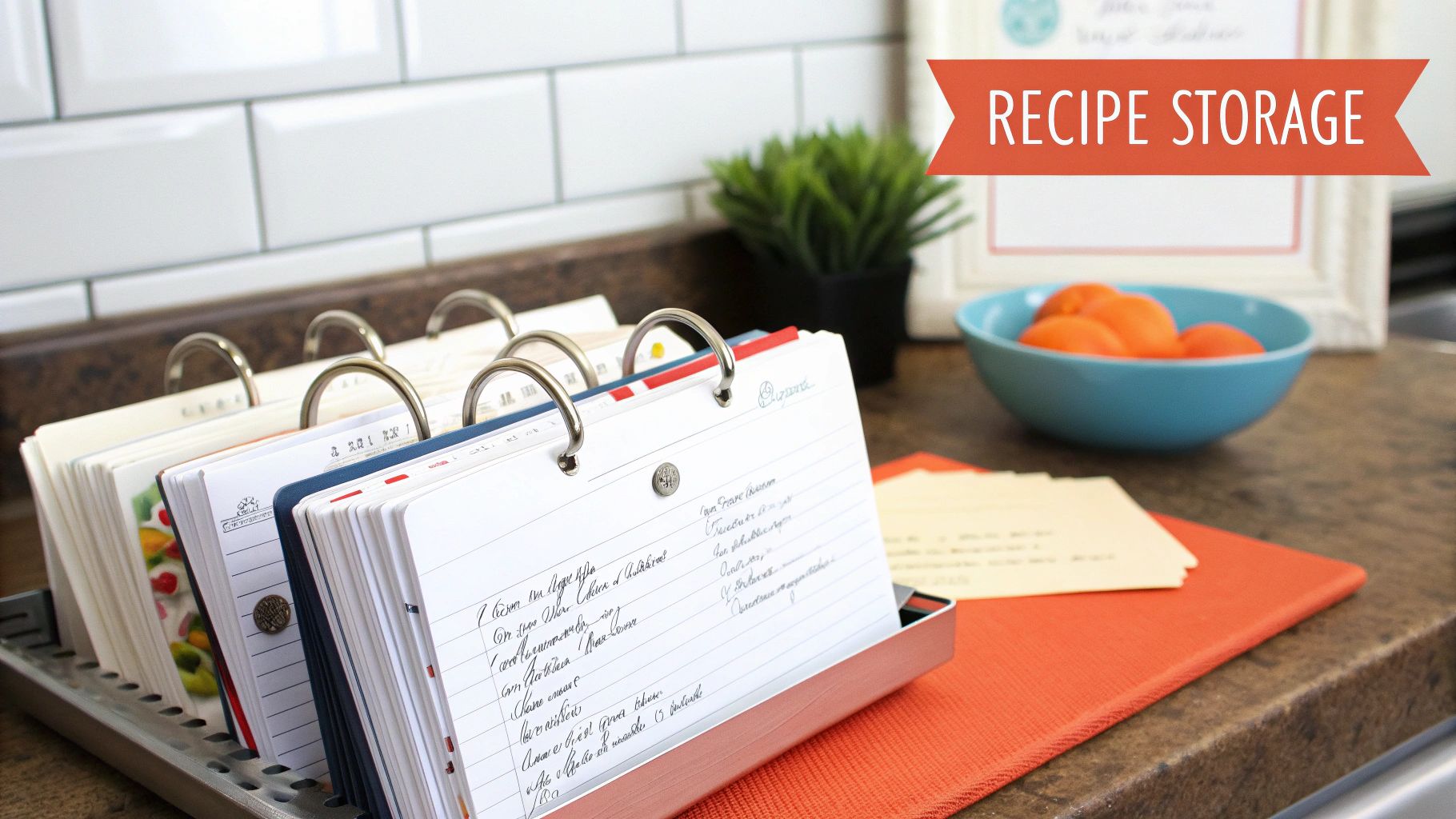
Let's face it, a disorganized recipe collection can turn cooking into a frustrating scavenger hunt. Piles of torn-out magazine pages, bookmarked websites, and handwritten notes scattered everywhere can quickly become overwhelming. This visual mess creates mental clutter, making it hard to even decide what to make. Instead of feeling inspired in the kitchen, you're more likely to feel stressed.
This recipe chaos also wastes valuable time. How many times have you searched high and low for a specific recipe, only to give up and cook something else? Or even worse, started a recipe only to discover a missing ingredient, requiring a last-minute trip to the store? These little inconveniences add up, taking away time you could be enjoying the cooking process.
Disorganized recipes can also impact your budget and lead to food waste. Forgotten recipes often mean forgotten ingredients, left to expire in the refrigerator. On the other hand, constantly searching for new recipes can cause impulse purchases at the grocery store – ingredients for dishes you never actually make. This is a common problem, especially for home cooks juggling a growing recipe collection.
It's no wonder that the need for better recipe management is driving a growing market. The global Recipe Organizer market is expected to reach $1,424.65 million by 2033, up from $571.3 million in 2025. This growth reflects the increasing use of digital tools for meal planning and recipe organization. Learn more at Cognitive Market Research.
Organizing your recipes isn't just about neatness; it's about rediscovering the joy of cooking. When your recipes are well-organized, you can easily find inspiration, plan meals efficiently, and spend less time searching and more time cooking. This allows you to explore new flavors, revisit family favorites, and transform your relationship with cooking from stressful to satisfying.
The Hidden Costs of Recipe Disarray
- Lost Time: Searching for recipes and ingredients takes away from valuable time.
- Food Waste: Forgotten recipes often result in expired ingredients.
- Increased Spending: Last-minute grocery runs and impulse buys can strain your budget.
- Cooking Frustration: Disorganization takes the joy out of cooking.
- Missed Opportunities: A cluttered system makes it harder to experiment with new recipes.
So, how do we move from recipe chaos to culinary calm? The next section will explore different ways to organize your recipes, helping you find the best system for your cooking style.
Digital Vs. Physical: Finding Your Perfect Recipe Home
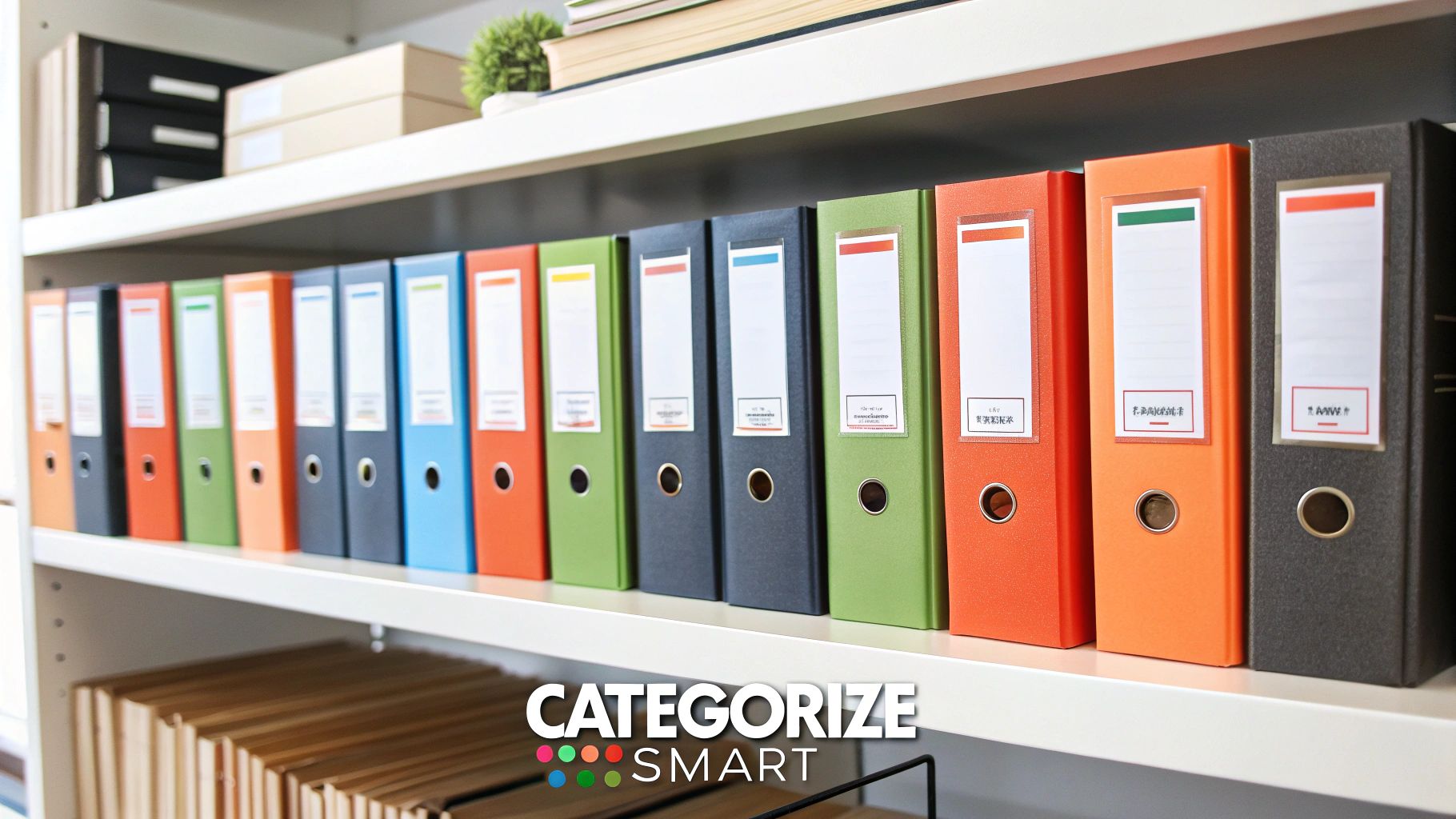
The perfect recipe organization system? It's personal. Some cooks love the searchable nature of digital organization, others prefer the feel of a physical recipe collection. This section explores the pros and cons of each, helping you find the best fit for your cooking style.
The Allure of Digital Organization
Digital organization offers significant advantages. Searchability is key, allowing you to quickly find recipes based on keywords, ingredients, or dietary needs. No more shuffling through stacks of paper! Digital platforms also offer easy backup and sharing. Share a favorite recipe with a friend via email or text in seconds.
For those interested in mastering digital recipe organization, check out this helpful resource: How to master digital recipe organization.
The Comfort of Physical Collections
Physical recipe collections offer a different kind of satisfaction. The tactile experience of flipping through handwritten cards or beloved cookbooks connects us to food and family traditions. These physical items often hold sentimental value, carrying memories and stories across generations. This tangible connection can enrich the cooking experience. For some, the act of writing a recipe down helps them learn and personalize it.
Weighing the Pros and Cons
Let's compare the two methods in a table to highlight their key differences. This table, "Digital vs. Physical Recipe Organization Methods", provides a comparison of different recipe organization approaches, highlighting the pros, cons, and best use cases.
| Organization Method | Pros | Cons | Best For |
|---|---|---|---|
| Digital | Searchable, Backupable, Shareable, Accessible | Requires Devices, Can Feel Impersonal | Tech-Savvy Cooks, Large Collections |
| Physical | Tangible, Emotional Connection, No Tech Needed | Can be Disorganized, Difficult to Share, Fragile | Smaller Collections, Sentimental Cooks |
The table highlights the key differences between digital and physical methods, reinforcing the importance of choosing the right fit for your individual needs. The best method isn't about "better" but about what you'll actually use and enjoy.
Embracing the Hybrid Approach
Many cooks find that a hybrid approach, combining both methods, is the perfect solution. This could involve digitizing cherished family recipes while using recipe apps like Paprika for everyday cooking. Or perhaps keeping a physical binder for frequently used recipes while storing others digitally. This blended approach preserves sentimental value while offering the convenience of digital tools. This flexibility allows you to create a truly personalized and effective system.
Mastering App-Based Recipe Management
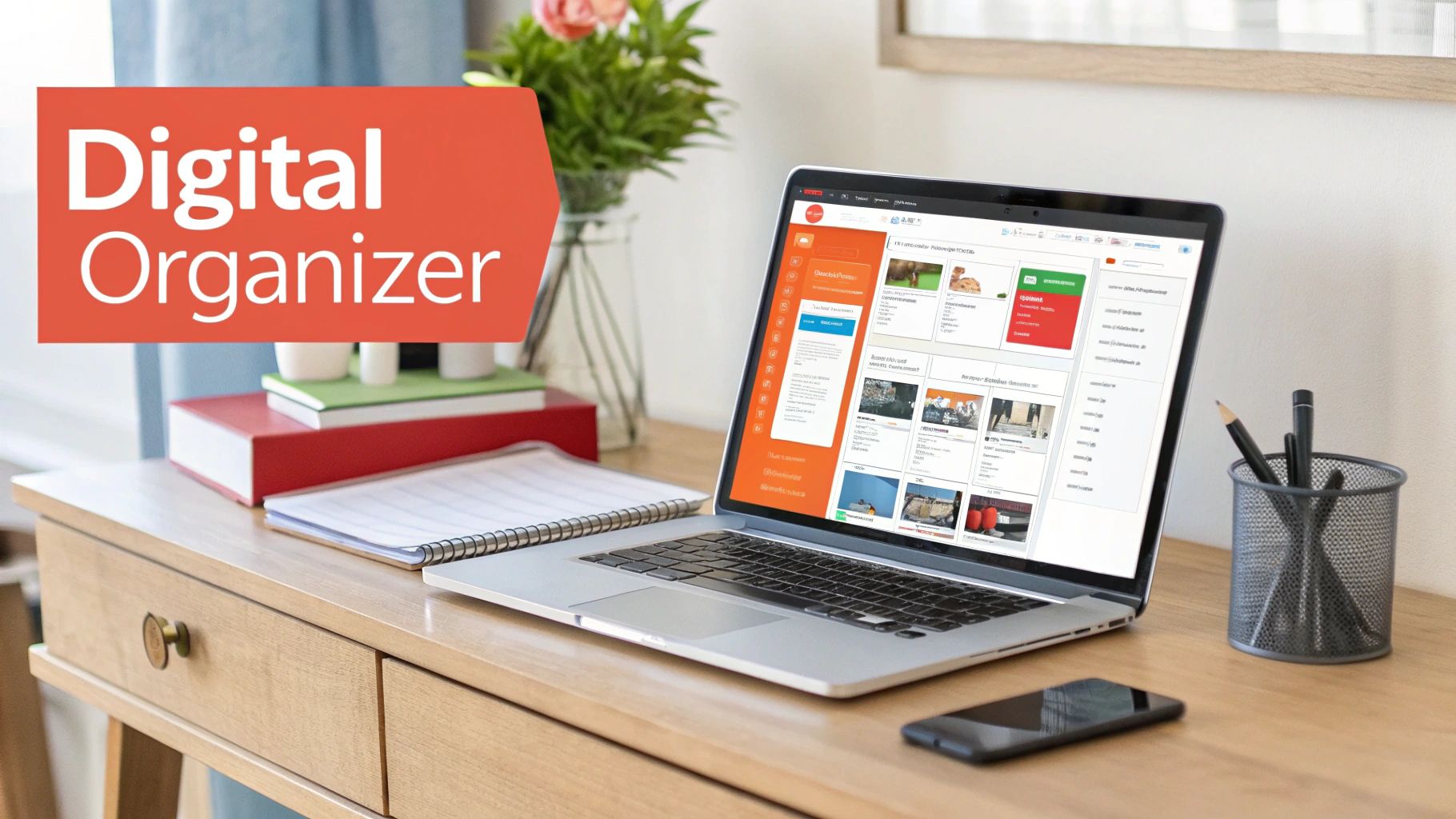
Downloading a recipe app is just the first step. This section explores how to truly integrate digital tools into your cooking routine. Think of it as creating a personalized digital kitchen, one that's efficient, inspiring, and tailored to your specific needs. It's more than just storing recipes; it's about building a system that streamlines your entire cooking process.
Tagging: Your Secret Weapon for Recipe Retrieval
A good tagging system is essential for organized recipes. Instead of broad categories, consider how you search for recipes. Do you search by cuisine? Or perhaps by how much time you have? Tagging recipes with keywords like "vegetarian," "30-minute meals," or "comfort food" creates a personalized search engine within your app. This transforms a simple recipe list into a dynamic, searchable database. For more tips, check out this article on how to master recipe categorization.
Categorization: Beyond the Basics
Standard categories like "Breakfast," "Lunch," and "Dinner" are a good starting point. But adding subcategories can truly reflect your cooking habits. For example, under "Dinner," you might include "Weeknight Dinners," "Special Occasion Dinners," or "Slow Cooker Meals." This makes finding the perfect recipe quick and easy. It's all about anticipating your needs and organizing your digital collection accordingly.
Integration and Backups: Protecting Your Culinary Treasures
Many recipe apps integrate with smart kitchen devices like smart ovens and smart displays. This allows you to send recipes directly to your device, minimizing errors and maximizing efficiency. Regular backups are also important. Imagine losing your entire digital recipe collection! Cloud-based storage or external hard drives can safeguard your recipes, preserving years of culinary adventures. If you're interested in exploring secure storage solutions, check out these highly-rated document management systems.
Learning From the Pros: Real-World Examples
Professional chefs organize their kitchens meticulously; everything has its place. Apply this same principle to your digital recipe collection. Many home cooks create dedicated collections for specific events, like holidays or potlucks. This advance planning simplifies meal preparation and reduces stress. It not only saves time but also encourages creativity and culinary exploration.
Recipe apps are experiencing significant growth. The global recipe app market is projected to reach $2.32 billion by 2029 at a CAGR of 13.2%. This reflects the increasing popularity of home cooking and the integration of smart kitchen devices. You can find more detailed statistics here. By adopting some of these best practices, you can truly master app-based recipe management and transform your cooking experience.
Creating Physical Systems That Actually Last
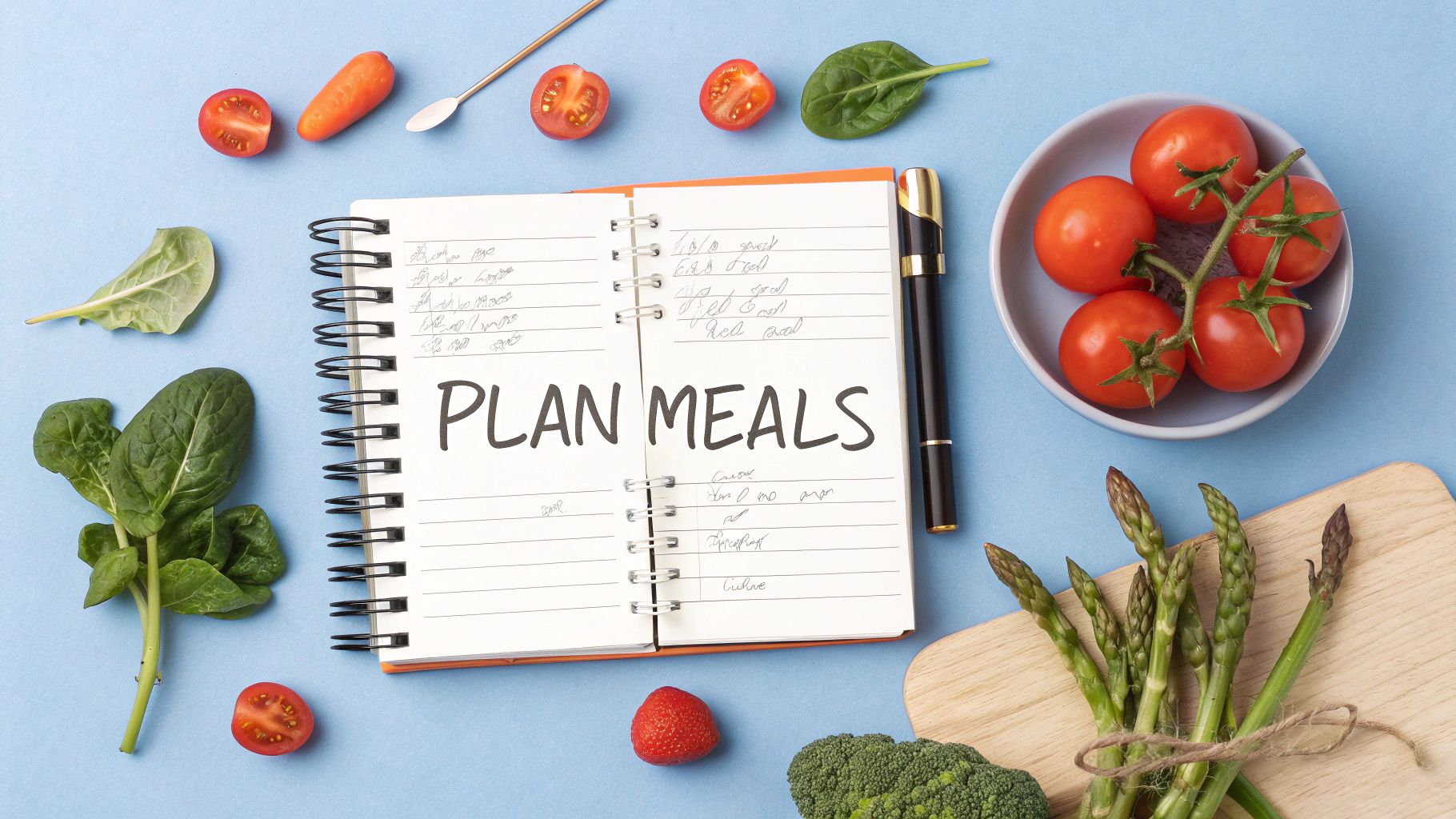
Physical recipe collections connect us to our culinary heritage. However, maintaining these collections in a bustling kitchen requires a practical organization system. This section explores effective strategies for creating a physical system that can withstand the rigors of daily cooking and accommodate a growing recipe collection. These methods are inspired by generations of home cooks.
Categorization: Reflecting Your Cooking Style
Standard cookbook categories like "Appetizers" or "Main Courses" don't always align with how we cook. Instead, create categories that reflect your lifestyle and cooking habits. Think "Weeknight Meals," "Holiday Baking," or "Recipes from Grandma."
This personalized approach makes your collection more user-friendly. It allows you to quickly find recipes for specific occasions or dietary needs. You're organizing for your needs, not a generic template.
Indexing: Finding What You Need Quickly
A good index is essential for any physical recipe system. A simple binder with numbered pages and an index card system works well. List each recipe's name and page number on an index card.
Organize the cards alphabetically or by category. This allows you to quickly locate recipes without leafing through every page. This is especially helpful for larger collections.
Preservation: Protecting Your Treasures
Handwritten recipes are often delicate and susceptible to damage. Preserving these culinary heirlooms is important. Photocopy or scan originals to create backups.
Store fragile originals in protective sleeves or archival-quality boxes. For frequently used recipes, lamination makes them spill-proof. This lets you enjoy using them without fear of damage.
Incorporating Modifications: Capturing Your Culinary Journey
Recipes change as we cook them. Write down notes, modifications, or substitutions directly on recipe cards or printouts. This captures your individual cooking style.
Develop a system for these notes. Use a designated section on the card or colored sticky notes. You might find this helpful: How to master printed recipe organization. This creates a living record of your culinary journey.
The Emotional Connection: Preserving Family Stories
Physical recipe collections are more than just instructions; they hold family history. Adding photos, anecdotes, or stories related to recipes adds depth and meaning.
These additions transform a simple recipe card into a cherished keepsake. They connect you to past generations and preserve family traditions. Organizing your recipes becomes a journey of rediscovering family stories.
Building Hybrid Systems That Capture The Best of Both Worlds
The best recipe organizers often blend digital and physical elements. This hybrid approach allows you to enjoy the advantages of both, creating a personalized system that is both functional and keeps those sentimental favorites close. Let's explore how to build a hybrid system that works for you.
Deciding Which Recipes Go Where
Consider which recipes are best suited for each format. Your grandmother's handwritten apple pie recipe, stained with years of love, belongs in a physical collection. A quick weeknight chicken stir-fry? A digital app like Paprika Recipe Manager is perfect for that. This thoughtful division preserves the emotional connection to treasured recipes while taking advantage of the searchability of digital platforms.
Digitizing Handwritten Recipes: Preserving Tradition
Scanning handwritten recipes creates digital backups while preserving their emotional value. Consider adding photos of the original recipe card or stories associated with the dish to your digital file. For example, include a photo of your grandmother baking or a story about when the recipe was first used. This adds a personal touch to your digital collection.
Bridging Physical and Digital with QR Codes
Adding QR codes to physical recipe cards or cookbooks links directly to your digital notes or variations. Imagine flipping through your grandmother's cookbook and instantly accessing your own personalized notes on her famous lasagna recipe. This bridges the gap between the tangible and the digital, creating a richer, more interactive cooking experience.
Maintaining Consistency Across Formats
Consistency is key for an effective hybrid system. Use similar categories and tagging systems across both your physical and digital collections. For example, if you categorize recipes by cuisine in your app, use the same categories in your physical binder. This consistency helps you locate recipes quickly, regardless of format, preventing confusion and ensuring you can always find what you need.
To help illustrate different organization methods, here's a quick look at several popular options:
Popular Recipe Organization Tools and Methods
Overview of top-rated recipe organization solutions with key features and typical user profiles
| Tool/Method | Format | Key Features | Price Range | Best For |
|---|---|---|---|---|
| Paprika Recipe Manager | Digital App | Cross-platform syncing, recipe clipping, grocery lists | Paid | Tech-savvy cooks |
| Plan to Eat | Digital App | Meal planning, grocery lists, recipe import | Subscription | Organized meal preppers |
| Physical Binders | Physical | Customizable sections, recipe card protectors | Varies | Hands-on cooks, sentimental value |
| Recipe Boxes | Physical | Index cards, dividers | Varies | Simple organization, quick access |
| Evernote | Digital App | Note-taking, tagging, web clipping | Free/Paid | Versatile organization, digital notes |
This table highlights the diverse options available, from digital apps to traditional physical methods, each with its own strengths and catering to different organizational styles.
Learning from Hybrid Organizers
Many successful hybrid organizers regularly review and update both their physical and digital collections. This prevents clutter and ensures both systems remain useful. Some use a simple tagging system for dietary needs or cooking time. Others create digital collections mirroring physical cookbooks they own. These examples demonstrate how a personalized hybrid system truly captures the best of both worlds. By finding the right balance between digital efficiency and the sentimental value of physical recipes, you can create a unique system that fits your needs and enriches your cooking experience.
How Recipe Organization Varies Across Cultures
Recipe organization isn't universal. It's deeply influenced by cultural cooking practices and the adoption of technology. This means organizing recipes can look quite different in Japan compared to Italy. Let's explore these regional variations.
Cultural Influences on Recipe Preservation
In many cultures, handwritten recipe collections are cherished heirlooms, passed down through generations. These physical records represent a tangible connection to family history and culinary traditions. However, in technologically advanced societies, mobile apps like Paprika are quickly becoming the preferred method for storing and sharing recipes. This shift highlights the growing importance of convenience and accessibility in the kitchen.
Culinary Traditions and Organization Needs
Culinary traditions significantly impact organizational preferences. Some cultures prioritize precise measurements and detailed instructions, necessitating structured systems. Others emphasize sensory cooking, where knowledge is transmitted through observation and experience. This often leads to less formal recipe documentation. For example, many families hand down spice blends using imprecise measurements like "a pinch of this" and "a handful of that," relying on taste and learned intuition. This demonstrates how cultural approaches influence how recipes are recorded and organized.
Consider the Asia-Pacific region, where the recipe app market is booming. Free apps are especially prevalent, indicating a demand for affordable and user-friendly cooking tools. This market segmentation, categorized by app type, features, and use, reflects how consumer preferences shape technological trends. You can find more statistics on this trend here.
Bridging Cultural Approaches
Today, global cuisine enthusiasts are developing innovative organizational strategies that blend traditional and modern approaches. They are digitizing handwritten family recipes while simultaneously exploring new cuisines using apps. This merging of old and new allows cooks to honor family traditions while enjoying the benefits of technology. The result is a personalized system that preserves authentic cooking practices while adapting to the digital age.
Maintaining Systems That Evolve With Your Cooking Journey
The key to a successful, long-term recipe organization system isn’t about immediate perfection. It’s about building a flexible structure that adapts to your evolving cooking habits and growing recipe collection. This section offers practical maintenance strategies that fit seamlessly into a busy lifestyle.
Regular Reviews: Preventing Recipe Overload
Think of your recipe collection as a garden. Without regular maintenance, it can quickly become overgrown and difficult to manage. Smart organizers schedule regular reviews to prevent this. Even a quick monthly check-in can be surprisingly effective. During these reviews, look for recipes you haven’t used recently. Do they still align with your current tastes and lifestyle? If not, consider deleting, archiving, or moving them to a less accessible location. This helps keep your collection from becoming overwhelming.
Rating and Curating Your Collection
Using a simple rating system adds another layer of organization. After making a new recipe, rate it based on how much you enjoyed it and how likely you are to make it again. This curates your collection over time, ensuring it’s filled with recipes you love. A rating system also helps you quickly find your go-to meals when time or inspiration is short. A basic star rating system (1-5 stars) can effectively highlight favorites.
Integrating New Recipes: Seamlessly Expanding Your Repertoire
Discovering new recipes is exciting, but adding them to your existing system shouldn't feel like a chore. Establish a simple process for incorporating new finds. For digital systems, this might mean tagging and categorizing the recipe immediately after importing it. For physical systems, set aside a specific place for new recipes. Review these periodically and integrate them into your main collection. This regular integration prevents a backlog of unorganized recipes.
Addressing Common Challenges
Maintaining any system has its challenges. Duplicate recipes can clutter both physical and digital collections. Create a plan for identifying and removing duplicates. This could involve choosing your favorite version or merging notes from different sources. Recipe overflow is another common issue. Clear criteria for what earns a spot in your main collection can help you decide what to keep and what to discard. Consider factors like frequency of use, personal preference, and sentimental value.
Seasonal Reorganization and Evolving Categories
Your cooking preferences change with the seasons, and your organization system should too. Seasonal reorganization is a great way to keep your recipes relevant. Bring forward seasonal recipes and move less timely ones to the back. You might also find that your categories need to change. As your culinary interests grow, so should your organizational structure. If you begin exploring a new cuisine, for example, adding a dedicated category is a smart move. These adjustments ensure your system stays useful and reflects your current cooking journey.
Are you ready to transform recipe chaos into culinary calm? Recify, an app that helps you effortlessly save and organize recipes from any online source. Create personalized collections, convert links into easy-to-follow instructions, and consolidate your favorite recipes in one place. Visit Recify today and start cooking smarter, not harder.
